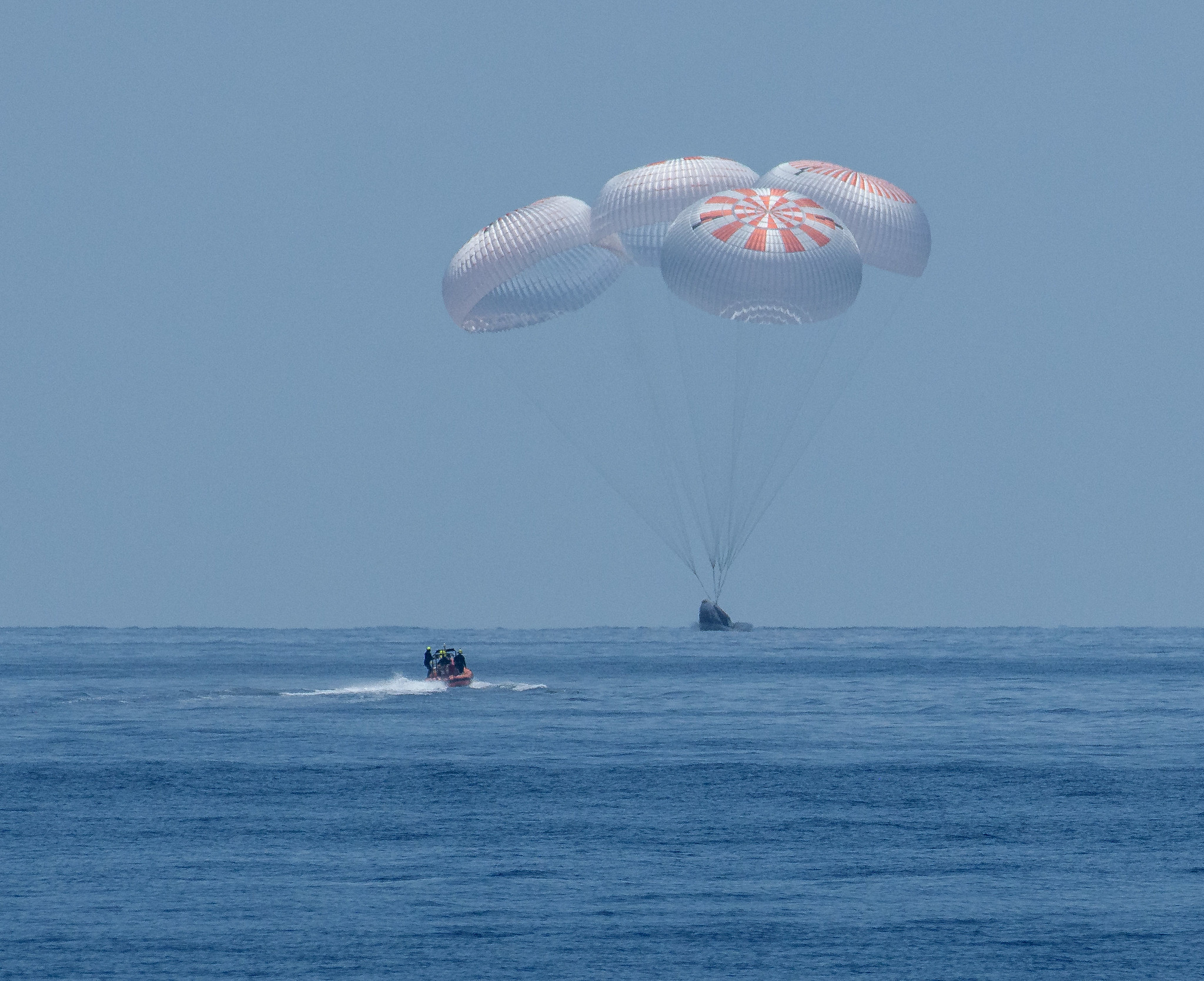
For SpaceUpClose.com & RocketSTEM
CAPE CANAVERAL, FL – After two action packed months in Earth orbit two NASA astronauts splashed down safely in the Gulf of Mexico today, Sunday, Aug. 2, inside their SpaceX Crew Dragon spaceship on the history-making first human spaceflight launch from US soil in nine years and the first ever commercially built and operated human space mission – after returning from the International Space Station to complete the Demo-2 test flight that opens a revolutionary new era in human spaceflight while simultaneously cutting costs and increasing access.
The success of the Crew Dragon Demo-2 test flight on SpaceX’s 1st crewed mission paves the way to regular NASA contracted astronaut missions by SpaceX – assuming all goes well with certification reviews by the agency starting now.
SpaceX’s Crew Dragon Endeavour spacecraft carrying veteran NASA astronauts Robert Behnken and Douglas Hurley splashed down safely under four huge red and while parachutes in the Gulf of Mexico off the coast of Pensacola, Florida at 2:48 p.m. EDT (1848 GMT) Sunday, Aug. 2 after undocking from the ISS yesterday evening.
“Today was a great victory, but it was just the beginning,” NASA Administrator Bridenstine said in a post-splashdown news conference today from NASA’s Johnson Space Center in Houston, Texas.
"Today was a great victory, but it was just the beginning. The #Artemis program is our sustainable return to the Moon."
As we celebrate today's #LaunchAmerica success, Administrator @JimBridenstine reminds us to look to the future: pic.twitter.com/027IYdMP3v
— NASA (@NASA) August 2, 2020
“We are entering a new era of human spaceflight, where NASA is no longer the purchaser, owner and operator of all the hardware,” he added.
“We are going to be a customer — one customer of many customers in a very robust commercial marketplace for human spaceflight to low-Earth orbit.”
"We are entering a new era of human spaceflight."
Administrator @JimBridenstine comments on the historic nature of our #LaunchAmerica mission: this is the beginning of commercial transportation to and from the @Space_Station. pic.twitter.com/Gnc9D1JqIw
— NASA (@NASA) August 2, 2020
Crew Dragon was developed under the auspices of NASA’s commercial crew program with the goal of restoring US human spaceflight capability to low Earth orbit (LEO) – lost since the forced retirement of the space shuttle orbiters.
With SpaceX Crew Dragon available NASA’s complete dependence on the Russian Soyuz for astronauts seats to orbit since the space shuttle era ended in 2011 will end.

The hugely successful Demo-2 test flight concluded after 64 days in space when Crew Dragon Endeavour and the dynamic duo of Bob and Doug were successfully plucked from the ocean waters by SpaceX’s GO Navigator recovery ship.
“Welcome home, Bob and Doug! Congratulations to the NASA and SpaceX teams for the incredible work to make this test flight possible,” said Bridenstine.
“It’s a testament to what we can accomplish when we work together to do something once thought impossible. Partners are key to how we go farther than ever before and take the next steps on daring missions to the Moon and Mars.”
The scorched capsule was bobbing in the ocean waters – looking like a toasted marshmallow.

Today’s splashdown also counts as the 1st splashdown of Americans astronauts from space in 45 years since the return of Thomas Stafford, Vance Brand, and Donald “Deke” Slayton landed in the Pacific Ocean off the coast of Hawaii on July 24, 1975, to conclude the historic Apollo-Soyuz Test Project or ASTP.
ASTP counts as the first international joint space mission and the first handshake in space between the US and the then Soviet Union that absolutely paved the way to international cooperation culminating in the creation, building and operation of International Space Station.
Welcome home @NASA astronauts @Astro_Doug and @AstroBehnken, the first crew to complete a mission to the @Space_Station aboard a spacecraft commercially built and operated by @SpaceX, and the first crew to splash down since 1975! First 📷: https://t.co/5x8PATizvy More to come! pic.twitter.com/QkIsvGuVDY
— NASA HQ PHOTO (@nasahqphoto) August 2, 2020
This year ISS celebrates 20 years of continuous human presence in space from which Bob and Doug just returned.
Within an hour of splashdown Crew Dragon was hoisted aboard GO Navigator by the hydraulic lift.
“@AstroBehnken and @Astro_Doug have been lifted out of the water and are aboard the Go Navigator. Welcome home. #LaunchAmerica,” NASA tweeted.
.@AstroBehnken and @Astro_Doug have been lifted out of the water and are aboard the Go Navigator. Welcome home. #LaunchAmerica pic.twitter.com/gjqUcLMy8X
— NASA (@NASA) August 2, 2020
After the recovery teams deemed it was safe and poisonous nitrogen tetroxide fumes were mitigated they were helped out of the capsule onto stretchers – first Bob and then Doug.
“To anybody who has touched Endeavour, you should take a moment to just cherish this day.” Touching words from @Astro_Doug as @AstroBehnken is safely brought out of the spacecraft. #LaunchAmerica,” NASA tweeted.
"To anybody who has touched Endeavour, you should take a moment to just cherish this day."
Touching words from @Astro_Doug as @AstroBehnken is safely brought out of the spacecraft. #LaunchAmerica pic.twitter.com/0yKUWbD9Ed
— NASA (@NASA) August 2, 2020
“Applause is heard from the @SpaceX teams as @Astro_Doug has joins @AstroBehnken safely out of the Dragon Endeavour spacecraft. #LaunchAmerica”, NASA tweeted.
Applause is heard from the @SpaceX teams as @Astro_Doug has joins @AstroBehnken safely out of the Dragon Endeavour spacecraft. #LaunchAmerica pic.twitter.com/3aBzXbAzuG
— NASA (@NASA) August 2, 2020
Following medical checks they boarded a waiting helicopter and returned to shore at Pensacola Naval Air Station.

Soon thereafter Bob and Doug were quickly flown back to Houston where they were met by their families, officials , NASA Administrator Jim Bridenstine and SpaceX CEO and founder Elon Musk.
“No matter where you are on planet Earth, this is a good thing,” said Musk at JSC reflecting on meaning of Crew Dragon’s resounding success today.
“I’m not very religious, but I prayed for this one.”
"No matter where you are on planet Earth, this is a good thing."@SpaceX CEO @ElonMusk reflects on the success of the #LaunchAmerica mission and what it means for commercial space capability: pic.twitter.com/qYjBRd2GPO
— NASA (@NASA) August 3, 2020
“On behalf of all SpaceX employees, thank you to NASA for the opportunity to return human spaceflight to the United States by flying NASA astronauts Bob Behnken and Doug Hurley,” said SpaceX President and Chief Operating Officer Gwynne Shotwell.
“Congratulations to the entire SpaceX and NASA team on such an extraordinary mission. We could not be more proud to see Bob and Doug safely back home—we all appreciate their dedication to this mission and helping us start the journey towards carrying people regularly to low Earth orbit and on to the Moon and Mars. And I really hope they enjoyed the ride!”
But a major security breach happened just minutes after splashdown when some two dozen totally reckless and completely idiotic pleasure boats including a thoughtless Trump supporter with banner gathered around Crew Dragon while it was floating and before GO Navigator had arrived.
This incident was seen live on NASA TV and captured in this NASA photo

Officials had decided to retarget the primary splashdown zone to the coast of Pensacola in the Gulf of Mexico and Florida’s West Coast and away from Florida’s eastern coastline because of the impending approach of Hurricane Isaias off the US East Coast.
Initially NASA and SpaceX were targeting an ocean landing zone from stretching from Cape Canaveral to Jacksonville to Florida’s West Coast in the Gulf of Mexico.
The critical Crew Dragon truck separation and deorbit burns took place as planned at 1:51 and 1:56 p.m. ET (1751 and 1756 GMT) Aug. 2 respectively, followed by closing the nose cone and exposing the heat shield – thus starting the inevitable sequence for the fiery reentry into Earth’s atmosphere and return to Earth less than an hour later culminating in today’s spectacular splashdown.
Deorbit burn is complete. ✔️ #LaunchAmerica pic.twitter.com/d7cSpO8sKb
— NASA (@NASA) August 2, 2020
Peak heating reached 3500 F as the Dragon was slowed from 17500 MPH to about 15 MPH. The drogue and main parachuted all deployed as planned.
On Saturday evening Crew Dragon Endeavour fired thrusters and undocked at 7:35 p.m. EDT (2335 GMT) and gracefully and gently pulled away from the orbiting research complex setting up the splashdown.
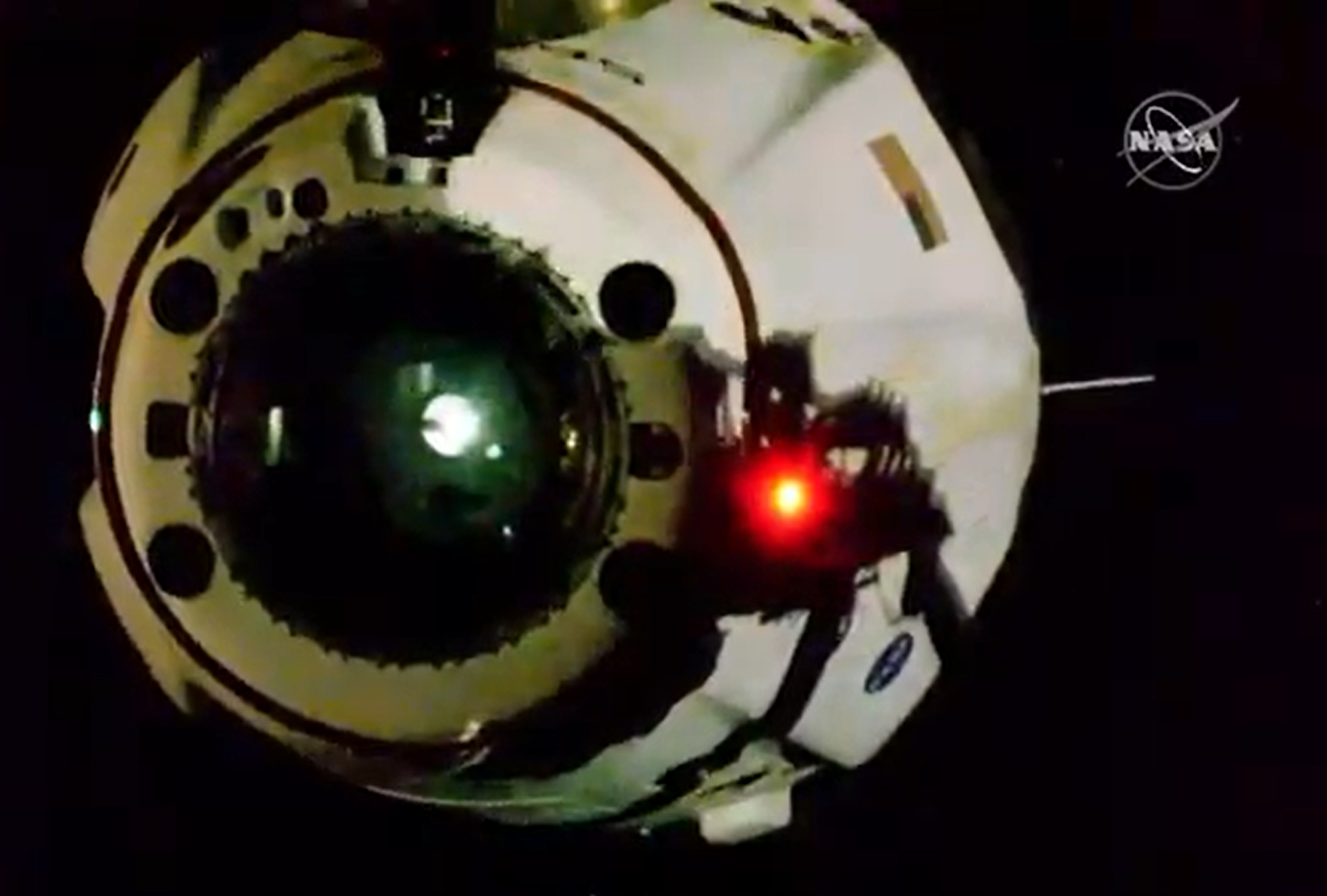
But before that Behnken and Hurley boarded Dragon Saturday afternoon following a farewell ceremony with the entire 5 man crew of Russians and Americans.
Then they and the Expedition 63 crewmates remaining on board led by Commander Chris Cassidy of NASA closed the hatches between the two ships from both sides.
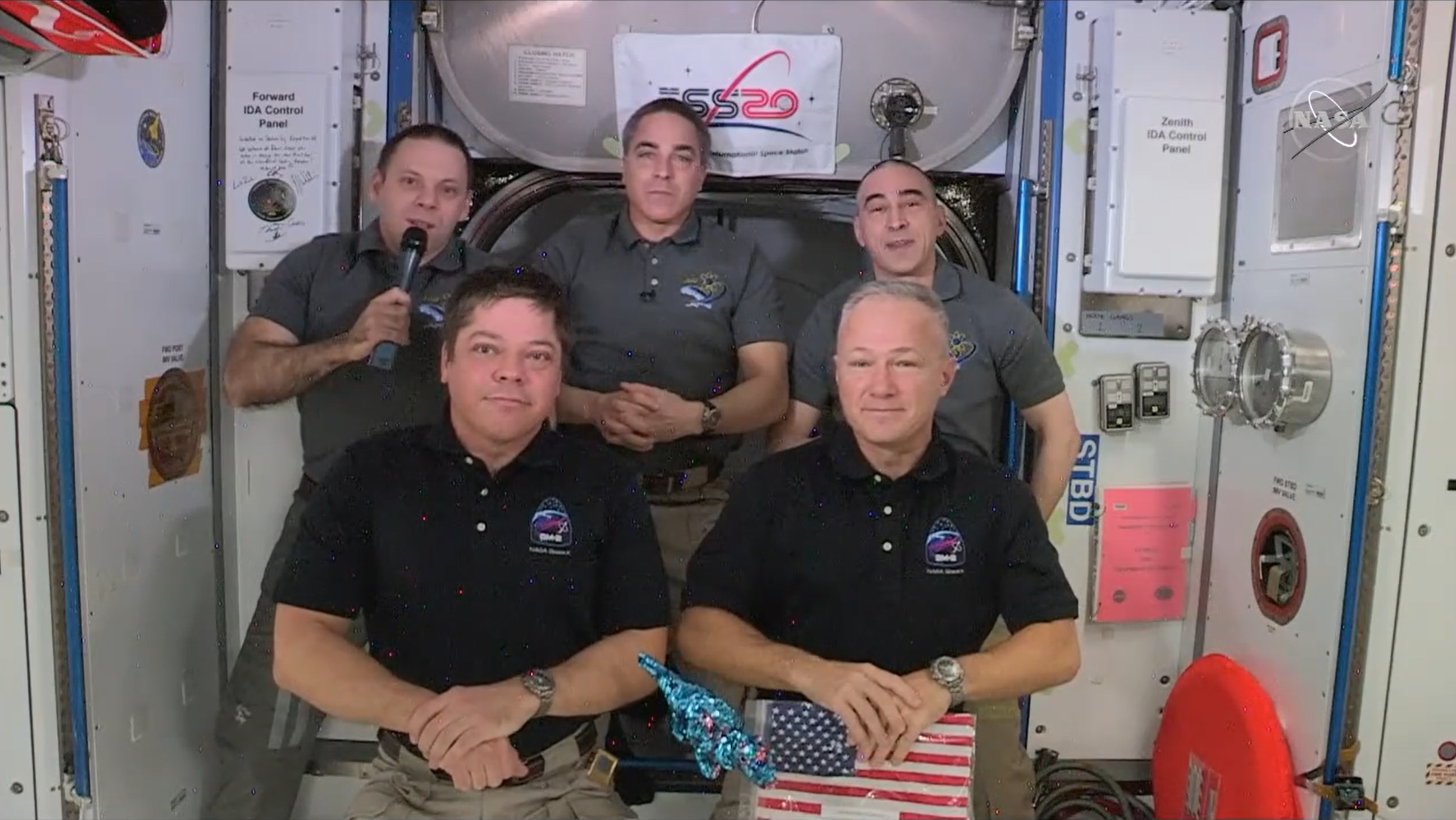
The gumdrop shaped Crew Dragon measures around 13 feet (4 meters) in diameter and 16 feet (5 meters) tall.
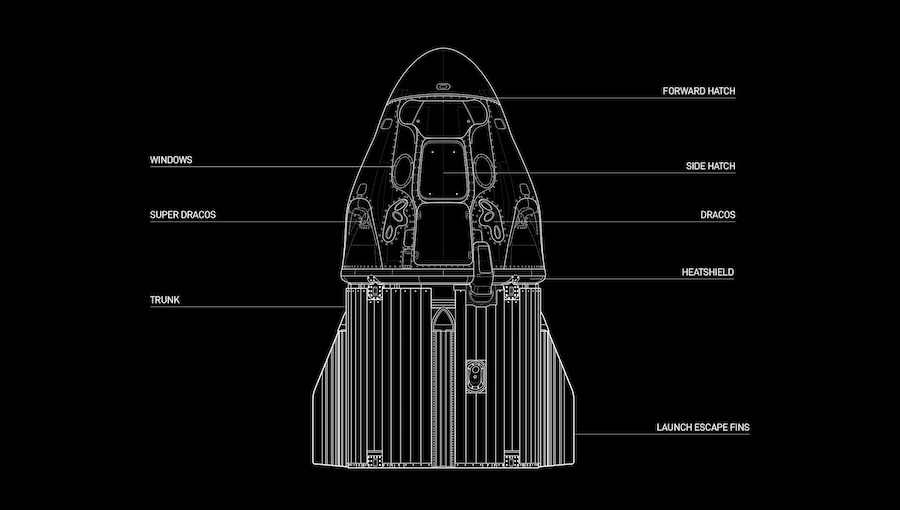
During their 63 days aboard station, Behnken and Hurley conducted over 120 hours of research time to support the orbiting laboratory’s investigations, participated in public engagement events.
Furthermore Behnken and Cassidy carried out four critical spacewalks to install new Li-ion batteries in the station’s power grid and swap out older ones to upgrade power systems and other station hardware.
The Demo-2 mission also marks the first piloted return of a SpaceX Crew Dragon – a flight of many historic firsts already including the first launch of US astronauts from US soil on US rockets in 9 years.
The NASA and SpaceX teams had seven splashdown zones to choose from on the East and Gulf coasts of Florida.
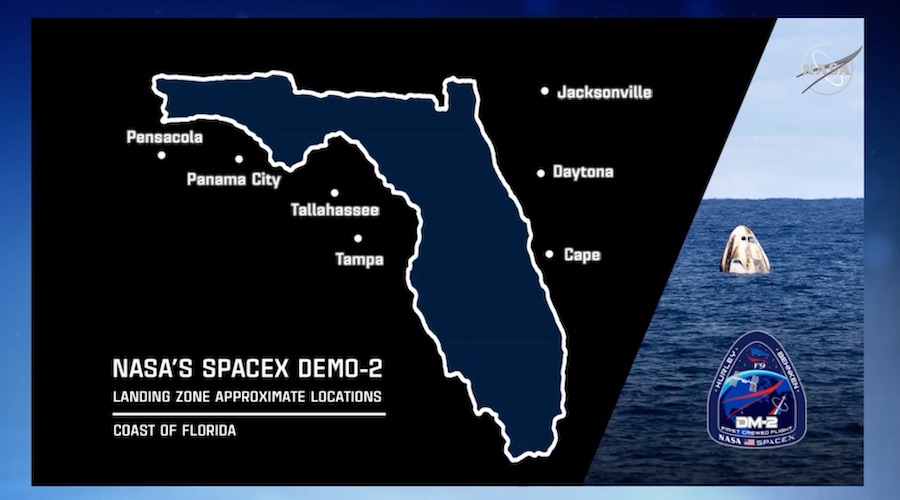
Altogether Behnken and Hurley spent 64 days in orbit or just over two months. For both it was their third space flight.
The historic Demo-2 test flight mission began with the beautiful and flawless blastoff of the SpaceX Crew Dragon spacecraft carrying NASA veteran astronauts Robert Behnken and Douglas Hurley lifting off at 3:22 p.m. EDT Saturday, May 30, on the company’s Falcon 9 rocket from Launch Complex 39A at NASA’s Kennedy Space Center in Florida bound for the International Space Station (ISS) – to the cheers of tens of thousands of spectators gathered from around America and three days after dismal weather forced a scrub of the first attempt on Wednesday.
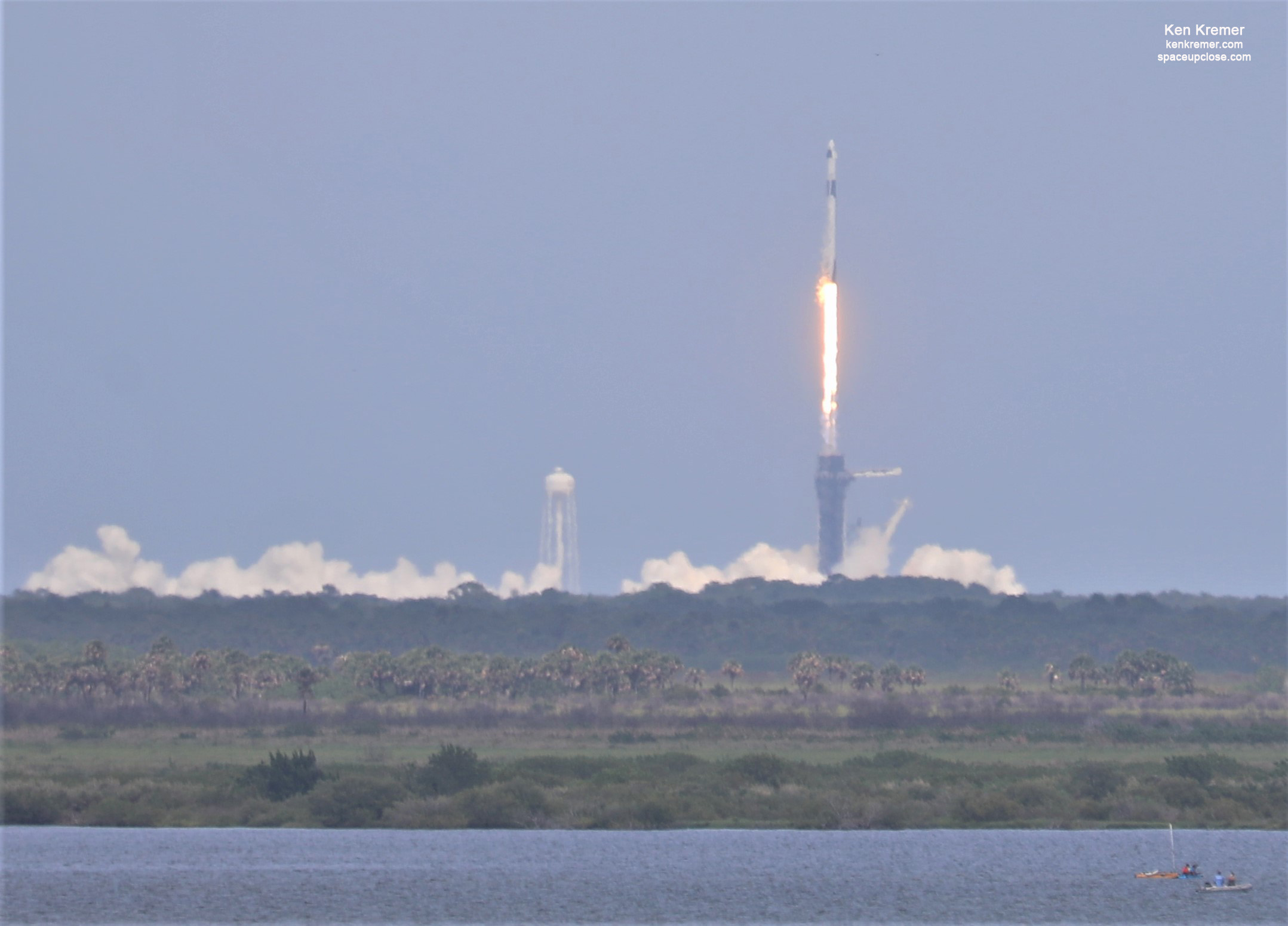
Behnken and Hurley flying aboard the commercial SpaceX Crew Dragon Endeavour safely docked at the ISS Sunday morning, May 31, just 19 hours after the first human launch from US soil for the first time in nine years on a history making and flawless blastoff from the Florida Space Coast.
The next crewed launch of a SpaceX Crew Dragon on the 1st crew rotation mission to the ISS is planned for NET late September 2020 on the Crew-1 flight.
That’s if all goes well after teams thoroughly check all systems aboard Endeavour to ensure its safety and operability.
NASA needs a minimum of 6 weeks to certify the SpaceX Crew Dragon vehicles are safe and ready for future human spaceflight missions.
A crew of 4 astronauts from NASA and Japan have already been announced and are in training for the Crew-1 mission launching from the Kennedy Space Center pad 39A.
“You’re up next Crew-1! #LaunchAmerica”,” Bridenstine tweeted from JSC with the crew and Elon Musk.
https://twitter.com/JimBridenstine/status/1290077898905444352
Crew-1 were on hand at JSC to congratulate Bob and Doug
“On behalf of Crew-1 and our families, we want to say congratulations to @AstroBehnken and @Astro_Doug.” One of our @NASA_Astronauts scheduled for the next @SpaceX mission to the @Space_Station, Mike Hopkins, congratulates the #LaunchAmerica team:”
"On behalf of Crew-1 and our families, we want to say congratulations to @AstroBehnken and @Astro_Doug."
One of our @NASA_Astronauts scheduled for the next @SpaceX mission to the @Space_Station, Mike Hopkins, congratulates the #LaunchAmerica team: pic.twitter.com/TlkK2UxQMI
— NASA (@NASA) August 2, 2020
https://twitter.com/NASA/status/1290031759258718208
Watch Ken’s continuing reports about Commercial Crew and Artemis and onsite for live reporting of upcoming and recent SpaceX and ULA launches including Demo-2, Starlink, X-37B, Solar Orbiter, Mars 2020 and more at the Kennedy Space Center and Cape Canaveral Space Force Station.
Stay tuned here for Ken’s continuing Earth and Planetary science and human spaceflight news: www.kenkremer.com –www.spaceupclose.com – twitter @ken_kremer – email: ken at kenkremer.com
Dr. Kremer is a research scientist and journalist based in the KSC area, active in outreach and interviewed regularly on TV and radio about space topics.
………….
Ken’s photos are for sale and he is available for lectures and outreach events
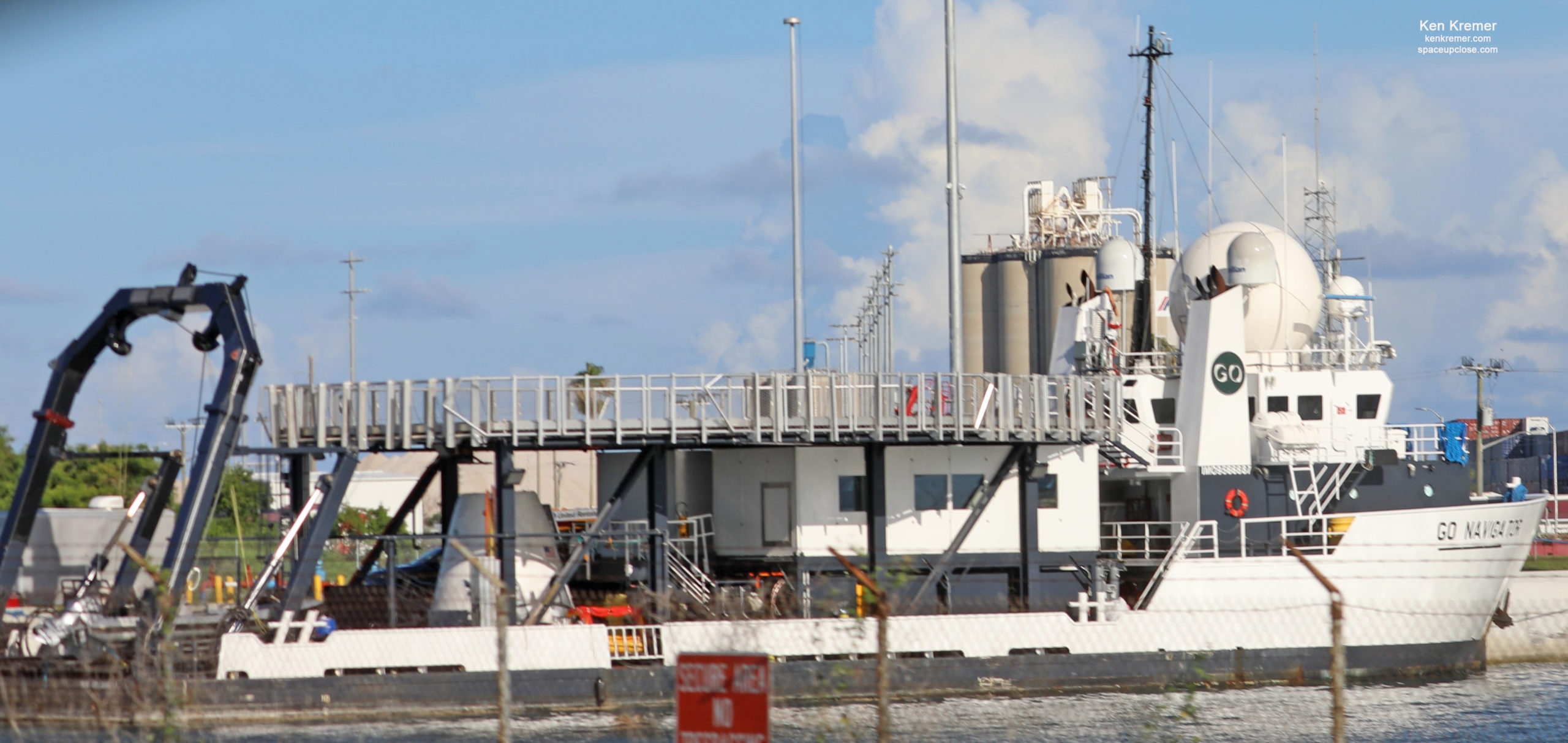
x



